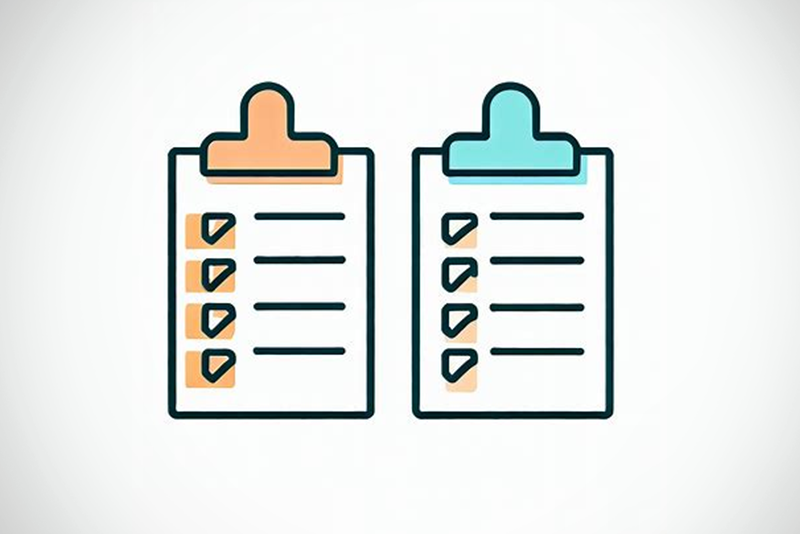Best Practices for the B2B Side of Key Account Management

Focus on key accounts is a lot more important in the B2B sector, and for good reason: the complexity of B2B businesses demands efficiency, and handling a large roster of customers all of whom clamor for attention can stretch teams thin. B2B businesses rely on customer management heavily to keep a steady sales flow. While they focus on key accounts, the management strategy usually follows regular account management practices. Based on the size and the products offered, vendor organizations can have multiple criteria for identifying key accounts, but it is important to understand the nuances of customer needs before embarking on a key account management process. Leaders of the organization can guide or collaborate on creating a plan for key accounts, with multiple departments – and implement practices that benefit both the customer and the vendor. The business of key accounts The first factor that pops up when ‘key’ accounts are mentioned, is revenue. Classifying customers based on the revenue share they bring to the organization is a common classification method, as any customer that drives a large chunk of revenue should be treated well. These key account contacts can also refer new prospects, because word of mouth carries a lot of weight when critical business functions are involved. Their endorsement can also lend credibility to the organization and its products, along with opportunities to learn, evolve and innovate. The major focus should be on prioritizing the future of the partnership, instead of instant gains. Understanding parameters like recurring sales, customer’s lifetime value, scope of innovation and common growth, and shared goals can make the choice of key customers obvious. Collaboration between multiple teams is necessary to provide a strong support that successfully nurtures them. Re-evaluating the current sales process can shed light on how long-term relationships can be formed with key customers, and can reveal if the upselling potential of the product is a feasible option. What does a successful key account manager do? Providing training in strategic account management is the preferred option for 61% of organizations to achieve greater revenue and customer satisfaction. Training teams on understanding best account management practices, allows managers to determine what accounts can be termed ‘key’ ones and apply different tactics instead of focusing on closing a one-time deal. Strengthening ties and aligning with customer goals for the short and long term requires key account managers to think beyond the box. 1. Making personal connections that focus on business might sound like an oxymoron, but strategic account managers with their in-depth customer knowledge can provide extremely personalized solutions to the problems faced by their customers. They can change their pitch sequence to address these issues, and convince customers on how the product is suited to fulfil their needs. They can also pitch customizations and add-ons that customers can use to extract additional value from their operations. The understanding of accounts keeps teams to be proactive, anticipate customer needs, and stay up-to-date on industry trends. Having a personal equation also allows employees to alert and educate customers about potential changes. Customers nowadays want a partner who can guide them into understanding best practices and why they matter, so that they can focus on the core aspects of their job and not spending time on researching a tangential aspect of their task. Results show that customer satisfaction can lead to a bump of 20% and more in engagement, while improving revenue generation by more than 15%. 2. Tailoring solutions in the best way possible right from the moment of pitching, can allow managers to create customer-specific product plans and benefits. Showing the benefits of the product usage to the customers on a regular basis switches the focus of customers on to the extra value provided, can be even interested in upselling opportunities with the same product, or other offerings from the vendor. based on the needs of each account. By tailoring the services to meet specific needs, the relationship can be elevated from buyer and seller to business partners. The big-picture view of key account management gives managers the freedom to fit relevant services in regular workflows of customer organization. The streamlining promotes confidence in the abilities of the solution provider, and interactions between both parties can take a consultation-based role. 3. Enabling decision making is essential for managing high-value accounts, which require time and resources of multiple teams and employees. Having a strong manager who can take calls that are in the interests of both parties and not just short-term gains, can drive operations smoothly. People skills and clarity in communication are essential for key account managers who handle large accounts that have multiple client stakeholders. Organizations should also look into tools that help in structuring and analyzing data, so that managers can plan future strategies with certainty, and keep team members on track. Why can’t all customers become key accounts? There’s a limit to key account management practices, and no matter how sophisticated a vendor’s processes are, some customer partnerships don’t develop past the transaction phase. Trying to convert such clients by assigning more resources, can only complicate matters – as it is really difficult to scale a client don from ‘key’ status, without losing it. Enthusiastic managers might be keen to designate the account they’ve just won as ‘key’, but leaders should have steps in place to negate such euphoric decisions. Highlighting differences between one-off transactions and potential partnerships through various lenses can solve this issue, and also helps managers look at factors beyond revenue (which is very important, but not the only important factor).The ratio of revenue to cost for customers shows the current state, while determining potential to expand ensures future growth, and highlights any mismatches with product fit. Based on the trajectory, key account managers can look at upselling and cross-selling, and push their customers toward high value status. Unlocking value from digital analytics AI and ML (machine learning) have made further inroads into efficiency and usability, and they can help B2B account management practices evolve too.
Successful Large Account Management Strategies for Account Managers

Pareto principle or the 80/20 rule can be seen in action in many organizations – but sales is where the effect becomes crystal clear; existing clients account for a large chunk of revenue, yet organizations focus their attention on acquiring new customers at the expense of existing ones. Treating valuable assets with greater care requires dedicated resources, which might not be feasible because of various reasons. Even in such cases, understanding and practicing successful large account management strategies and processes can help in extending the good work done at the time of sale closing. For small and medium businesses where sales teams wear many hats, it can add more value to existing customers through these methods. Guide: Comprehensive Career Path for a Key Account Manager What is large account management? Large account management can be seen as a highly scaled up version of Key Account Management, as it also focuses on long-term relationship building in a mutually beneficial way, between a vendor and their key customers. In-depth research and assessment help large account managers find opportunities that can be used to drive value for their organization. Identifying problems faced by large clients and offering creative solutions can leverage partnerships better, and get closer to achieving their strategic goals. A successful large account management program not only fosters customer loyalty, but also stimulates growth, increases profitability, and drives innovative solutions that can be scaled. While sales functions focus on customer acquisition and short-term selling, large account management weaves deeper relationships with core customers. The immediate impact on revenue overseen by sales, can grow exponentially over time if large account managers work their magic. Learn More: Role of Artificial Intelligence (AI) in Large Enterprise Account Planning Processes involved in large account management An effective and successful large account management program relies on formal, measurable, and repeatable processes to enable better partnerships with key customers. The factors that play a part in the success of a large account manager are quite similar to that of a key account manager: 1) Dedicated large account managers form the first line of requirement of any program that aims to provide and derive value. A program that assigns dedicated account managers who are separate from sales, so that their priorities aren’t split between other functions. The difference in the objectives of sales and large account management require different skill sets and approaches, as establishing customer relationships is vastly different from nurturing and maintaining them. Being analytical and approachable helps large account managers to build rapport with customers and provide strategic inputs on the growth opportunities. 2) Developing selection criteria distinguishes key accounts from large ones, and allows managers to provide necessary value to take the partnership forward. A shortlist of selection criteria derived from the alignments between the two organizations can drive focus on the actual issues, instead of the most recent ones. Picking three to five objective criteria, weighted according to their importance to the organization, reduces confusion among the Key Account Management team. These criteria can include product fits to customer needs, revenue and growth potential of the customer, cultural fit and geographic alignment, further partnership potentials, and so on. These factors vary from organization to organization, and different departments can designate key clients based on different criteria too. Having senior management take the lead can reduce confusion, as they can align the strategic goals and vision of the organization or product. This also streamlines the handover process from sales teams to large account management, and a formal, scripted handoff works well. This step, done regardless of the ‘key’ or ‘large’ nature of customers, leads to a central information repository that can be tracked in the account system. 3) Keeping up with the customers should begin as soon as large accounts are identified, or maybe even before that. Leaders should facilitate communication between the customer and the large account management team. The team members can take the dialogue forward and establish clear points of contact and what to expect. Managers can assist in developing an in-depth customer portfolio that assess details about the customer’s business and markets, what goals and initiatives they’re pursuing, details about stakeholder roles and responsibilities, information about key decision makers, latest trends and reposts in the industry, what the competition is doing, etc. These data points lead to a better understanding of the issues that customers face, and account managers can provide value through collaboration. Considering the organization’s pain points, how their needs or goals overlap with that of the vendor organization’s, can help managers to identify areas of progress and any problems that might be apparent in the near future. Data can aid in assessing collaboration opportunities in the short and long term. 4) Working with the customers based on the needs assessment, can help large account managers drill down to the best strategic opportunities and create a roadmap for the next year and more. They can provide strategic recommendations like potential partnerships opportunities, creative solutions to issues, establish specific long-term goals with short-term benchmarks, call out resource requirements in advance, and other such steps that demonstrate that managers are going above and beyond to understand and address customer needs. 5) Sticking to a frequency enables the strategic plan to be executed in accordance to the needs of stakeholders, and provides opportunities for regular checks and any course correction that might be necessary. Managers can also stay updated on the market trends and customer needs, and have clarity in their communication. 6) Monitoring and adjusting processes based on performance ensures short-term and long-term goals are on track, and allows for KPIs to be changed accordingly. It also provides a way to ensure accountability, where large account managers deliver on what is promised. It also shows the ways in which vendor organization has gone above and beyond, cementing the value add in customer’s mind. If the goal of mutual long-term benefit is not materializing, it can be apparent in these assessments – and becomes easier to reclassify the
Case Study: Leveraging Relationship Insights through Org Chart led to astonishing 27% hike in revenue

This case study is about the Digital Key Account Management practices of a US-based staffing company. We notice a key role played by DemandFarm’s Org Chart in leveraging Relationship Insights to result in a hike in revenue. The Org Chart provided solutions to all 9 pain points of the organization when it came to their Key Account Management practice. Org Chart allowed for a smooth transition for the recruitment and sales teams as it is native to Salesforce. Visual representation of contact information, hierarchy, key stakeholders and LinkedIn connectivity were also crucial to the company’s increase in revenue. Discover more on how DemandFarm’s Org Chart helped cross-functional collaboration to win key opportunities faster by downloading this case study. Read the Case Study here
Ideal Digital Account Planning Tool: A Checklist

How to Select the Ideal Digital Account Planning Tool This checklist contains 9 key factors that go into an ideal digital account planning tool. This includes leveraging CRM, real-time reviews, visual representation of white spaces, relationship intelligence, account intelligence and much more.
Key Account Management Plan Template

Key Account Management Plan As the saying goes, ‘failing to plan is planning to fail’. This could not be more true when it comes to Key Account Management. Creating and maintaining a Key Account Management plan can be critical to the success of your business. After all, your key accounts are the customers that bring the most revenue and profit. So it only makes sense to invest the time and resources necessary to keep them happy. But what goes into a Key Account Management plan? A Key Account Management plan will help you map out your approach, stay organized, and on track as you work to grow and nurture your relationships with your key accounts. If you are not sure where to start, don’t worry. We’ve got you covered with this Key Account Management plan template. We provide a systematic approach to analyze your customers, identify key areas, and adopt best practices of Key Account Management planning. 6 Steps of Key Account Management plan Broadly, a Key Account Management plan can be divided into 6 categories or steps: account analysis, self-analysis, business development, action plan, monitoring, and reviewing the plan. Each of these sections will provide you with an opportunity to capture information that you need to improve your business and ensure customer satisfaction. Step 1: Account analysis When creating a Key Account Management plan, start by analyzing your current accounts. This will give you a better idea of how to focus your marketing efforts. Also, it will help you identify the pockets of potential growth. For example, do you have any new customers on whom you are not able to collect data? Are there existing customers who are not satisfied with their experience? These and other questions can help you identify areas where you need to improve. Get to know their business better – what are their goals, what are their challenges, what are their priorities? Here’s a list of questions to guide you through some research: What is their company culture like? How do they view themselves? What is their budget like? How many employees have they hired? For each employee, what is their role description? What are their key performance indicators? What are the challenges the key account is facing? Best practice: You may find it helpful to create a diagram or table that illustrates the relationships between these various parts of your key account. Invest in an automated solution that can improve the integrity of your data while enhancing the research process. Step 2: Self-analysis What analytics can help you to understand is what type of information you need to focus on in order to improve your business. This includes customer requirements, competitive analysis, product development, and technical excellence. Depending on the situation, one or a combination of these elements will need to be emphasized. Current customers can be analyzed using a number of tools. You can use analytics and automation to get a handle on how your customers interact with your business. This will help you identify customer pain points that you can address with changes to your product or service. You can also analyze performance data to identify how your products perform. This can include identifying customer complaints, feedback, and satisfaction issues. Lastly, you can analyze sales projections to determine how much revenue you will be making in the coming year. These projections are based on estimated sales growth, which uses data from your previous experiences with similar products and services. All this information will help you create a list of initiatives that you need to address in your key account management plan. Define your objectives by answering questions like: What is your key account trying to achieve? What’s the bigger picture? Differentiate yourself by linking your capabilities to their key objectives. Best practice: Clearly define your objectives and allocate specific business units to a generic team rather than a specific account manager – it will foster a creative, collaborative culture. Step 3: Business development In order to sustain growth, businesses must constantly look for ways to improve their offering. This can include new products, processes, and services. However, innovation is not just for startups. Even large companies must continually look for ways to improve performance. For example, how can a company increase sales by 10% without increasing prices? How can they do this by improving their service? Or by adding new products that are both cost-effective and attractive to customers? Analyze the current state of the account and the factors that affect it. Consider this Market position (leadership, growth potential, share of market, price sensitivity) Business unit performance (income, cost, margin, growth potential) Current contracts (length, renewal likelihood, value, special terms and conditions) Customer service/relationship quality ratings (impact on new business opportunities) Competitors’ status (what are they doing?) Potential business opportunity value (current and future) Critical success factors (what would make the account happy?) Optional technology benefits Knowing this will help you frame how you approach the project. Also, it will help you identify the type of research needed to understand the client’s industry better. Best practice: Depending on the type of research you are doing, you can either outsource it to a specialist, or hire a professional researcher to do it for you. If you are conducting consumer research , you can create a survey or you can ask people who are familiar with the company to complete questionnaires for you. Step 4: Action plan Once you’ve done the research and analysis, it’s time to create your plan. Don’t worry about being perfect at this point – just get your plan drafted and then review it with your key account manager. Ensure everyone is committing to achieving the goals. A successful Key Account Management plan will show you where you need to go next to grow your business and build more value for your customer. Define timelines that are achievable and align with your objectives. What’s the short-term goal? What is the best time to do it? How will you
Key Account Management in CRM

Key Account Management in CRM If you’re like most businesses, your customer relationship management (CRM) system is the backbone of your sales process. It’s where you track your leads, deals, and customer data. But what happens when you start to scale your business and land bigger customers? Suddenly, your CRM doesn’t seem so robust. In fact, it might even start to feel like a hindrance. That’s because most CRMs are not built for Key Account Management (KAM). If you are managing large, complex accounts, you need a CRM that is up to the task. Key Account Management vs. CRM: Are you doing enough for your Key Accounts? At the outset, Key Account Management (KAM) is seen as an extension of CRM. The end goal is to sell a product or service to a customer. However, they fundamentally differ in their approach to achieving the goal. There are a few key reasons why KAM is often seen as a more effective strategy than merely relying on your CRM. First, KAM takes a more holistic view of the customer, seeing them as a partner in achieving mutual goals rather than simply a transactional relationship. Second, KAM focuses on building long-term relationships with key customers, rather than trying to maximize short-term gains. Finally, Key Account Managers are typically more highly trained and specialized, they are better equipped to deal with the complex needs of key accounts. What’s the difference between CRM & KAM? CRM software/system KAM software Objective Generating new leads for sales Identifying and building long-term relationships with existing customers Process Sales-driven Relationship-driven Approach Reactive Proactive Sales and marketing strategy One-size-fits-all approach Personalized strategies Success measure Based on the increase in top-line sales Based on the gradual increase of ROI over time Data Insights Insights generated from historical data Insights generated to anticipate future needs Value proposition Value creation for customer Value co-creation with customers Business Process and Approach Microsoft Dynamics CRM Solutions are sales-driven.. They are an important tool for business development to identify leads and nurture relationships throughout the sales funnel. All CRM solutions are devised around AIDA – Awareness, Interest, Desire, and Action. It is a reactive process that is based on customer interactions across the sales funnel touchpoints. Whereas, Key Account Management solutions are relationship-driven. KAM helps an organization cultivate, nurture, and deepen its relationship with key accounts in the business. This helps to gain deeper insights into the customer’s domain, conditions, and hurdles, which helps source the unique assets that are needed. KAM is a proactive approach involving account management plans based on the future needs of the customer. A KAM strategy is typically more focused on large accounts or customers that have the potential to bring in a significant amount of revenue. On the contrary, a CRM strategy is more focused on maintaining and growing relationships with all customers, regardless of their size or potential revenue. The sales team at a company that uses KAM will be much more focused on developing a deep understanding of their key accounts and customizing their sales pitch and approach to each one. The marketing team, on the other hand, will be more focused on creating and managing customer relationships across a wide variety of channels. Hope is not a Strategy! Key Account Management is focused on building relationships with key customers and understanding their needs. CRM is focused on managing customer data and interactions. While a CRM is designed primarily for sales, key account management forces you to approach your data in a new way. KAM forces sales and marketing teams to unite around a common goal: building deep relationships with high-value accounts. This collaboration fosters a more comprehensive view of your customers that extends beyond just the sales team. Strength in Unity A key account should not be assigned to one employee. The Key Account Management strategy often requires a more consultative and collaborative approach, as account managers work closely with their customers to understand their needs and develop custom solutions. This means that an account is not centralized, but rather distributed among various employees. This may seem counterintuitive to most companies, which have a sales rep assigned to all their customers. A KAM solution must facilitate collaboration across various teams (sales, marketing, tech, etc.). Role of Management CRM solutions are geared toward sales reps and marketers. The process requires multiple levels of approval from decision-makers. The entire process can be automated to specify each approval step, share files, and deliver campaigns faster. On the other hand, Key Accounts are a top priority for CEOs and CSOs. Their involvement in Key Accounts is imperative at all levels, strategic, operational, and relational. They play a central role in defining key accounts, identifying customers, and allocating appropriate resources to their key accounts. Reporting and Insights There are some key differences between analytics in CRM and Key Account Management. In CRM, analytics is focused on understanding customer behavior and trends and using that information to improve customer experiences and how to best interact with them. KAM analytics is focused on understanding the key drivers of customer profitability and growth. KAM analytics is much more strategic, while CRM analytics is more operational. Both CRM and KAM are important for businesses, but they require different approaches to analytics. While your CRM software is great for centralizing your client data, it cannot help you with KAM functions or provide insight into the relationship. To prepare for success, you need a tool that seamlessly integrates with your workflows and empowers everyone involved in the sales process. With KAM software, you don’t just track how far you have come based on data from previous months. Historical data does not help drive new sales. However, understanding your current strategic path and how far you’ve gotten on it helps you look ahead and plan your opportunities, investments, and operations better. Process and Technology
Building and Sustaining a High-Trust, High-Performance Culture™

The Great Place to Work® Assessment is considered a ‘Gold Standard’ in workplace Culture assessment. Since 1992, they have surveyed more than 100 million employees worldwide and used those deep insights to define what makes a great workplace. Our company has earned this recognition based on a rigorous assessment independently conducted by Great Place to Work® Institute India. We stood out with above-average assessment scores in our category of companies under 100 employees in all the dimensions that we were being surveyed under – Credibility, Respect, Fairness, Pride and Camaraderie. We are building a High-Trust, High-Performance Culture™ and we thrive due to a remarkable team who are passionate and driven.
How to Identify White Space Opportunities and Expand Account Revenue

Key account managers are always seeking ways to drive growth and deliver value to their accounts. While acquiring new customers is exciting, maximizing the potential of existing accounts is often the most strategic and profitable approach. Retaining and expanding relationships with your current customer base reduces acquisition costs while deepening trust and loyalty. One of the most effective ways to achieve this is by identifying White Space Opportunities—gaps in your customer’s current investment with your offerings. These represent unmet needs or untapped potential that, when addressed, foster growth for both your company and your customers, while strengthening long-term relationships. What are White Space Opportunities? Selling to existing accounts is more cost-effective than acquiring new ones. It demands less time, fewer resources, and minimal effort while delivering significant returns. Key Account Managers are increasingly focusing on identifying White Space Opportunities—areas within their accounts to upgrade, upsell, or cross-sell their services. These gaps represent overlooked solutions or unmet needs that can drive value and growth. By addressing these gaps, businesses not only generate additional revenue but also reinforce their position as a trusted partner, delivering tailored solutions that align with their customer’s evolving goals. Download Now: The Most Comprehensive White Space Analysis Template for Strategic Key Account Growth If Opportunity Doesn’t Knock, Build a Door! White Space actually means different things to different people. Some think of white space as an open playing field, with no competition. A few look at it as an untapped market. But the general consensus is that white space refers to the gap between what your existing customers have already bought from you and what other unique products and services you can offer them. More details about White Space in Business can be found here. While in editing and publishing, white space is also referred to as negative space, in business these gaps are seen as opportunities. These gaps can mean the opportunity to offer a product to a customer that has never used it, reconsider how a product or service can be used or offered or focus on under-utilized services or product features. Sometimes these opportunities can easily be identified. At other times, depending on the sector you’re in, it may need some effort, thought and ingenuity. Sales teams are extremely adept at finding White Space Opportunities because of a thorough understanding of the product. Being in contact with customers and understanding their current and future needs, they can suggest changes or tweaks in products in a way that would most appeal to customers. Here’s how you can align White Space Opportunity with your growth potential. What is White Space Analysis and what does white space mean in business? White Space Opportunities are identified through a process called White Space Analysis. This process helps companies discover possibilities among their existing customer base to cross-sell and upsell. It also uncovers accounts that may need more attention and focus. While it is always satisfying to bring in new customers and business opportunities, it is important not to ignore your existing customer base when looking for revenue-generating avenues. This practice gained importance during the Covid-19 pandemic when selling practices changed drastically. Companies started nurturing their existing customers to try and create new growth opportunities for themselves. Customers were equally pleased to stay with a company they had already tried and tested, rather than seek out a new product or service provider. How do you identify white space opportunities using white space analysis There are a few steps if you want to know how to do white space analysis: 1. Understand your current status An effective analysis begins with what your current position is. You will need to collate and analyze customer data using the Best customer data platform to gain insights into your existing customers’ investments in your company. If you don’t have this level of customer data at hand, getting it organized could be a time-consuming task, but an essential and invaluable one. If you have a large customer base, start this exercise with those customers that have the highest potential for investment in the future. Once you have this data, you will be able to identify which product or service your customers have invested in – and to what extent. You can segregate this data by: The size of your customers’ organizations The sector your customer’s business is in The type of opportunity they represent The products or services purchased When they bought with you All this data properly charted out and visually represented will give you a better understanding of white space opportunities. 2. Identify customer accounts White space analysis is an elaborate process. It requires a thorough understanding of what your customers need and how you can position what you offer to meet that need. You may need to further explore your customers’ needs, for example, by the areas or regions they are based in. Or by the opportunity type, they represent i.e., long-term customers, new customers etc. and the added investment they are likely to make. Understanding the customer’s business is also important at this stage. For example, are they looking to expand their company? Are they consolidating their business? Are they traditional and hierarchical companies? Are they more modern and flexible? Once you have a thorough understanding of your customer’s current investments in your products and services and knowledge of their needs – you’ve identified your opportunities! You can now cross-sell and up-sell your products or services. This exercise also allows you a better understanding of how you can reposition your own products, add or alter product features, and introduce upgrades and enhancements. 3. Analyze the selected customer accounts Once you’ve identified which customer accounts have the highest potential and are keen on future investments, you can go one step further. Identify which centers or units within your customer’s business make their own buying decisions. These can be based on departments, divisions, or regions. To make this distinction, you will also need to have information like where and how decisions are made, and budgets allocated to
Moving beyond CRM: Why Key Accounts need a dedicated Account Management platform

Driving and sustaining growth is very different from achieving a goal According to the results of multiple surveys, the biggest priority of a CEO is to achieve growth, Yet, only a small quantity of corporate leaders succeed in driving and sustaining growth because the focus is not exactly on achieving growth, but acquiring customers – at least in the B2C world. For B2B software solution vendors, however, the choice is different. They can focus on acquiring new customers, but it is the existing partnerships that enable them to do so. The focus on acquiring new customers might be exciting in the beginning, but statistics show that the action of onboarding new customers is five times costlier than keeping an existing one, as the odds of a successful sale are between five and 20 percent. Nurturing existing customers requires a different kind of work, where team members ensure their customers see the solutions provider as one and they think of one as their trusted advisor to help them meet their desired outcomes. As existing customers already know the team and have experienced the working of other solutions, the probability of a successful sale rises to 60 – 70 percent. The Survey also reveals how existing customers are twice as likely to try new products from their service provider, and their spends are 31 percent more than new acquisitions. The numbers make it clear that focusing on existing accounts and allotting resources to their emerging needs leads to success, yet organizations tend to prioritize acquiring new users above expanding the footprint of existing customers. A survey by Alpine Investors found that nearly 70% of revenue-oriented activities were prioritised on new customer acquisition, and only the remaining 30% were focused on engaging existing customers to generate more revenue. The findings were backed by the Miller Heiman CSO Insights Report, which found that 57.3% of global sales leaders surveyed prioritised capturing new accounts, even when the revenue from new customers accounted for only 29.9% of the revenue. The signs of the tide turning are evident too in these surveys, as the next item in the order of priority for sales leaders is to increase penetration into existing accounts. These accounts account for 70.1% of total revenue, which marks an increase over the previous years’ numbers. No matter how exciting winning new accounts is, the focus on the bottom line makes organizations rely more on the growth of existing relationships. This growth comes from expanding the scope of existing accounts, while improving activities that ensure account retention. The CSO survey showed this to be an important roadblock too, with only one-third of the leaders (34.6%) admitting their confidence in the abilities of their organization to expand existing accounts. Making the most of key accounts: where organizations falter The elements of account management that drive successful strategies have changed a lot over the last few decades, but nothing compared to the changes that have happened since 2020. The new normal requires organizations to majorly redesign their Account Management processes. Having a dynamic account management and sales process is the biggest driver of success to achieve sales goals, as they allow teams to adapt to new conditions quickly. This gives them a concrete base to work on, and cater to discerning buyers, disruptive technologies, changes in the market, buyer need changes, features launched by competition, and more. A constant revision of account plans helps vendor organizations to keep their customers happy in the long-term. But establishing a dynamic account management process is not feasible for all clients – and establishing a key account practice becomes essential. Like account managers, key account personnel also take care of the needs of the clients, but in a proactive way rather than the reactive nature of current account management (the number of accounts that an account manager handles makes it almost impossible for them to be proactive, to be fair). They tackle challenges before they become serious issues, observe relevant data and tweak the key account plan accordingly to meet upcoming needs, and keep their organization ready for changes. Only 28.9% of SaaS vendor organizations report being anywhere close to that level of process maturity, and they are qualified by their revenue goal achievement and customer stickiness. They also enable their key account managers (KAMs) with relevant tools that allow them to create and maintain dynamic processes for every key account, and take the partnership forward from a solutions provider to a trusted advisor. Source: Gartner Understanding the limitations of CRM Customer Relationship management (CRM) software are the backbone of any organization dabbling in sales in any capacity, and their importance in software B2B sales is immeasurable. Rightfully so, as they simplify sales opportunity and customer acquisition by capturing key metrics. They accurately pinpoint leads in the sales pipeline so that sales teams can take relevant steps to convert them into customers. Their strong focus is what makes them indispensable, and it is the same factor that rules them out from enhancing existing partnerships. As typical sales cycles are a few months long (at most, a couple of quarters) CRM tools are not equipped to plan long-term strategies, which is the need when it comes to existing clients. They don’t provide provisions to track customer goals, history, experiences, and a whole lot of other factors. Sales teams and key account managers should be able to accurately track and monitor changing goals and expectations, to get the customer to understand that the vendor organization is genuinely interested in providing them with solutions for the issues they’re facing. Download this guide to learn how to move beyond your CRM and build a successful Key Account Management process in 9 steps! Driving success with Key Account Management Software Key Account Management tools are geared to build solid relationships with existing customers. They help account managers save and analyze precise information about their key accounts. Watch Now: The Changing Role of Technology in Key Account Management The volume of the data, structured by
Understanding the Key Account Planning Process

The Key Account Planning Process Nurturing existing customers is a time-tested way of improving business, and for good reason: people who are already in business with an organization are more likely to understand the strengths and advantages the partnership can present. The odds increase while selling to an existing customer, by four to five times – showing how vendor organizations can achieve exponential growth by prioritizing key relationships. And like any relationship, digital tools can help enhance the experience. While B2C organizations have been trying to mass-personalize for years, B2B sales teams can achieve the effect with relatively lesser effort, because the target audience is limited to a number of stakeholders. Creating a key account plan for important accounts develops an effective strategy that fosters an environment of mutual growth. The ‘What’ of Key Account Planning Process Before understanding what key account planning is, The definition of what ‘key’ accounts are should be established. This is important because not all organizations have the same goals: for some, a key account might be the one with multiple sales opportunities, and for a smaller form – a customer with very high potential might be a key account (even if they’re contributing less). Key customers can also become vendor organization’s evangelists, refer new prospects to the group, and champion vendor’s products because of the difference it makes to their work. A key account plan shows the way to keep these clients’ needs fulfilled. It can be seen as a map that shows the current status of the partnership, what can be done in the future, and what steps can be taken. As Key Account Management adapts to a fast-paced digital environment, how do you foresee its future? ● What has changed in KAM post-COVID? ● What are the top contributors to a successful KAM program? ● What are some of the key skills required for effective KAM in the future? ● How will digital KAM change the selling experience, going forward? ● What are the kinds of tools important for KAM today and tomorrow? Watch the video below to understand the shifts in the Key Account Management journey. The ‘How’ of Key Account Planning Process Key accounts can be moderate to big projects, and takes a few hours to get started. Once the Account plan and details are in place, the duty of the sales team of the vendor organization is to keep it updated so that the information stays relevant. The process starts with Account overview, which defines the information that is relevant to the account plan. The information leads to setting up of Objectives, which provide insight into the client’s needs, paving way to develop a set of goals or objectives keeping the customer’s targets and vision. Setting objectives allows us to understand how the Solution should be presented. These solutions should be worded/framed or presented in such a way that they answer the questions posed by the customers’ objectives. The Action plan details out how to reach the destination, and earmarks clear responsibilities that provide a defined timeline for task completion. Sub-tasks are also captured in the action plan, if the project involves many stakeholders or teams that need to sign off, they need to be mentioned in the action plan too. Change management is about evaluating positive or negative outcomes of the action plan and assigning a value to it. This gives an understanding of what forces are acting against change, and devise ways to overcome them (or abandon the pursuit if the cost is high). Implementation plans are presented to the customer based on the information and insights gathered previously, So that an agreement can be reached in accordance with the action plan, ownership of tasks, important dates, and other factors. Review of the plan decides the frequency, and the element to be changed in the key account plan. The plan should be flexible enough to accommodate changes like attrition, budget variations, department changes, etc. Depending on the scale of the project, key account plans can be reviewed at any frequency – from weekly to quarterly. The ‘Why’ of Key Account Planning Process Key account planning affects the bottom line by building long-lasting relationships, creating trustworthy referrals, and improving bottom line – key accounts are spending 33% more than the market average. The results are because of improved customer experience – A Harvard Business Review article noted that customer satisfaction went up by 20% within a few years of the introducing key account management programs, resulting in a 15% profit increase. A Stanford university research shows that Key Account Management programs that have existed for longer than five years, report double the results. Key account management also frees up time of sales executives, so that they can pay the same attention to non-key clients too. Key account management software introduces automated processes and systems into the workflow, while improving efficiency and ensuring equal attention to all clients. Choosing key accounts for key account planning The challenge for many organizations aiming at key account management is defining what ‘key’ is. Selecting the right customers necessitates buy-ins across the organization on the metrics to be used. Some steps that can be taken to ensure the choices are alright, are: Collaboration between different teams can align goals and responsibilities, and results in better solutions for client issues. The act of deciding what services to include should not ride with only the sales team – as the services provided for key customers like priority support, interactions with developers, and others won’t be fulfilled by sales team members. Having those team representatives on the panel while deciding on what services to offer key customers, can result in a perfect customized solution. The teams involved will also understand how they should contribute to the requests of the key clients, and can raise requests for any additional work hours or resources. A collaborative approach aligns the expectations of internal stakeholders, and helps in designing a winning key account program. The act of collaboration gains more prominence